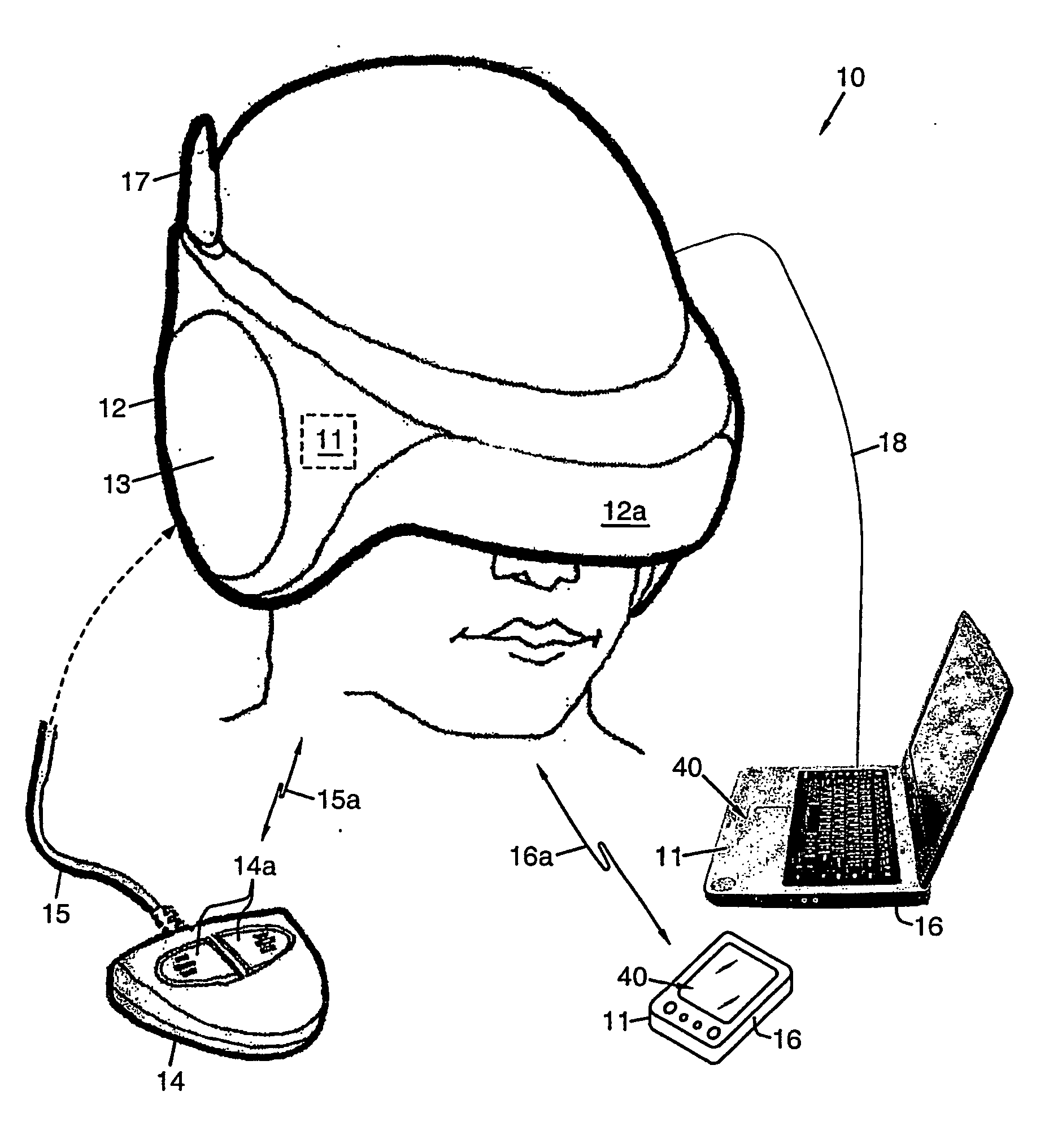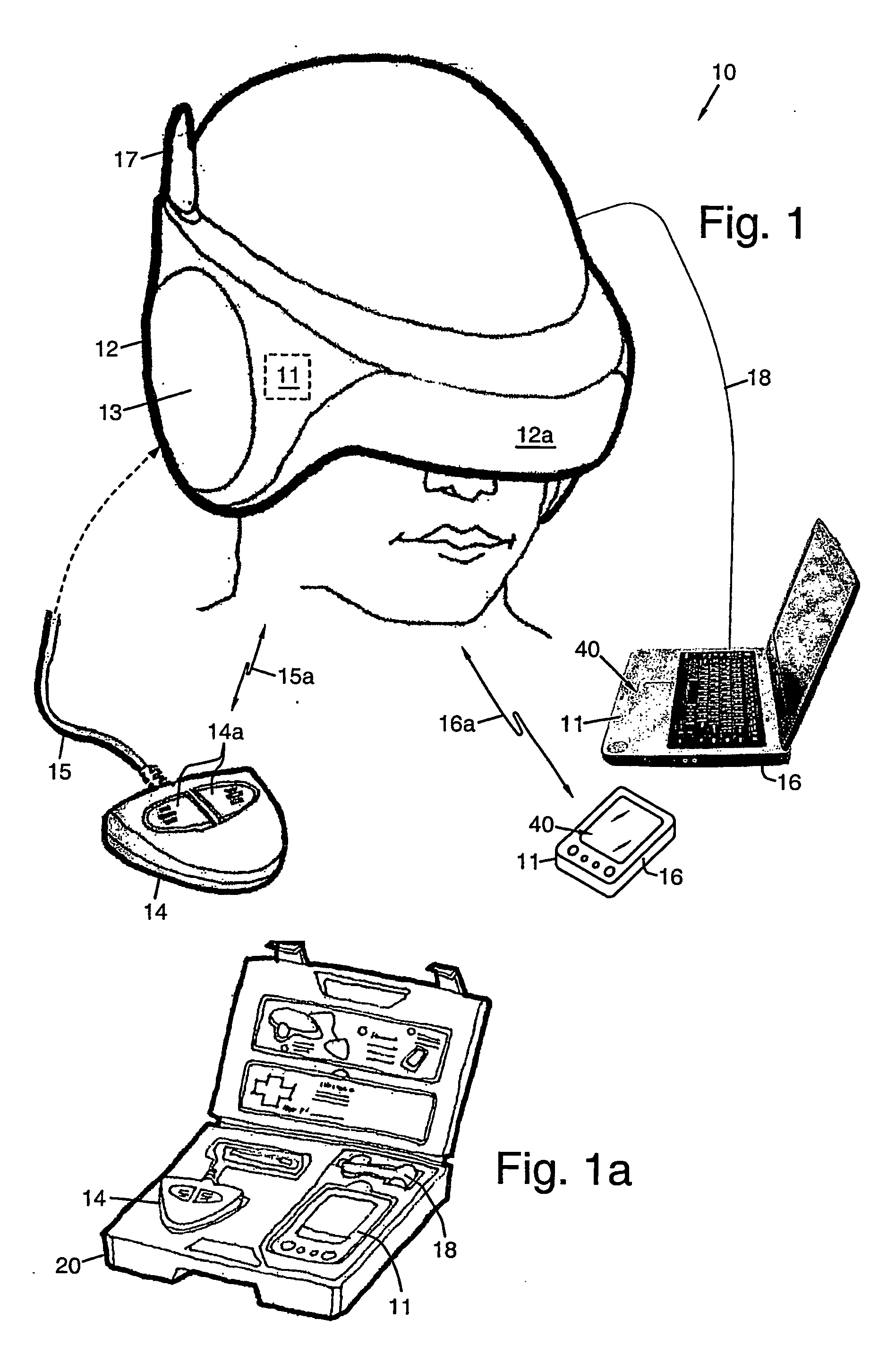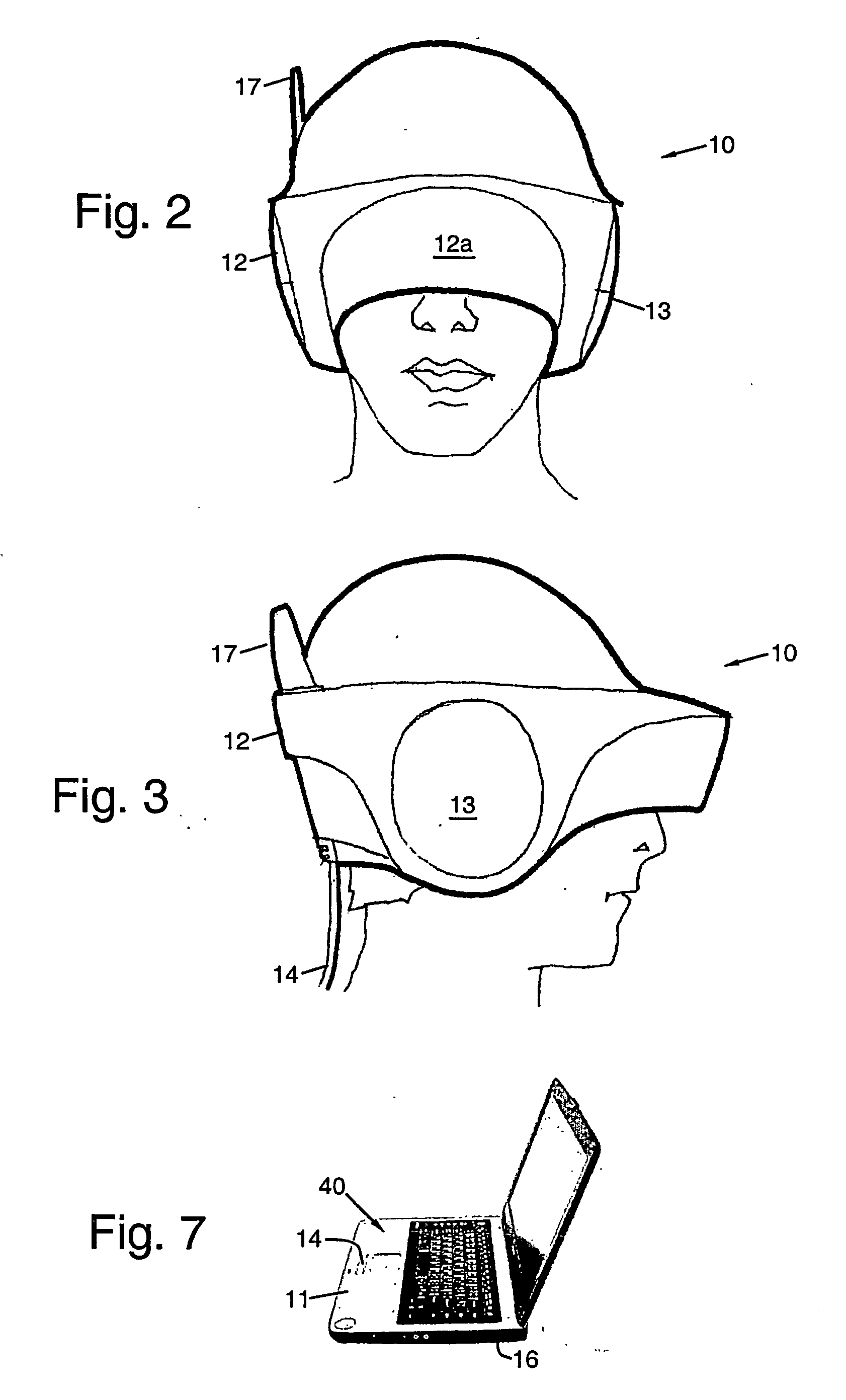Display enhanced testing for concussions and mild traumatic brain injury
a brain injury and concussion technology, applied in the field of assessment tools for diagnosing cognitive injuries and impairments, can solve the problems of inability to administer diagnostic tools, inconvenient use, and inability to meet patients' needs, and achieve the effect of reducing the number of patients, and improving the quality of li
- Summary
- Abstract
- Description
- Claims
- Application Information
AI Technical Summary
Benefits of technology
Problems solved by technology
Method used
Image
Examples
Embodiment Construction
[0053] Referring to FIG. 1, it illustrates exemplary embodiments of immersive cognitive assessment tools 10 or systems 10 in accordance with the principles of the present invention for diagnosing concussions and mild traumatic brain injury. FIGS. 2 and 3 show front and side views, respectively, of headgear 12 used in the exemplary immersive cognitive assessment tools 10 or systems 10 shown in FIG. 1.
[0054] The exemplary tool 10 or system 10 comprises a portable system 10 including a portable computing device 11, such as a portable computer 11 or a personal digital assistant (PDA), for example, and a software application 40 that runs on the portable computing device 11. The exemplary tool 10 or system 10 also comprises headgear 12 that is worn by an individual to be tested that totally immerses the individual within a test environment, The headgear 12 includes a display screen 12a and audio output device 13, such a headphones, for example. A response selection device 14 is coupled t...
PUM
 Login to View More
Login to View More Abstract
Description
Claims
Application Information
 Login to View More
Login to View More - R&D
- Intellectual Property
- Life Sciences
- Materials
- Tech Scout
- Unparalleled Data Quality
- Higher Quality Content
- 60% Fewer Hallucinations
Browse by: Latest US Patents, China's latest patents, Technical Efficacy Thesaurus, Application Domain, Technology Topic, Popular Technical Reports.
© 2025 PatSnap. All rights reserved.Legal|Privacy policy|Modern Slavery Act Transparency Statement|Sitemap|About US| Contact US: help@patsnap.com



